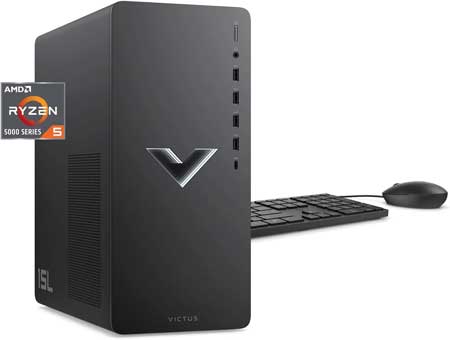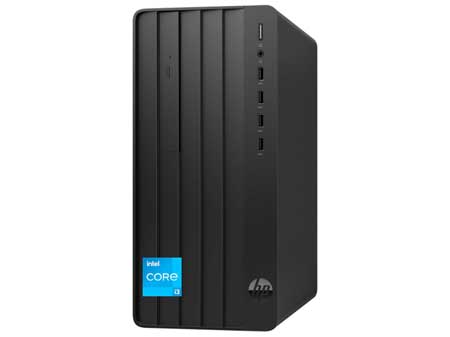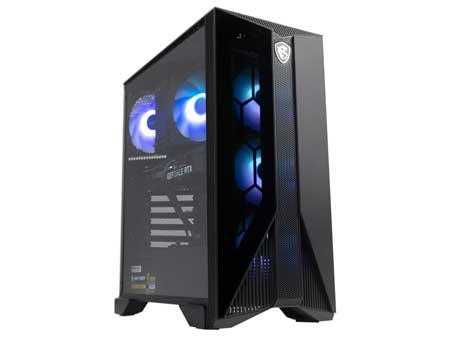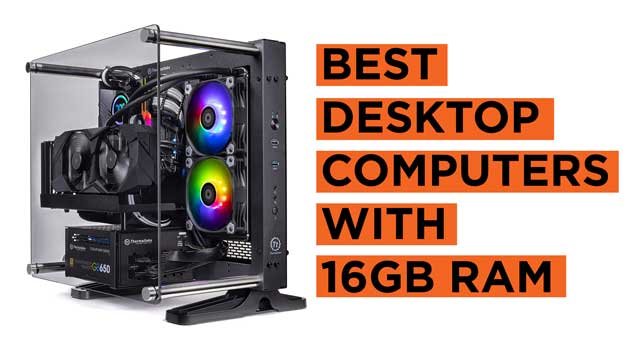This guide is crafted for creative pros, casual gamers, students in technical fields, home office users, and light-to-mid-tier content creators—those who need capable desktop computers that don’t overreach the budget, yet still offer solid performance. If your workload includes light 3D modeling, HD video editing, multi-tab browsing, graphic design, light coding, or casual Unreal or Unity testing, a desktop with 16GB of RAM hits the right performance-to-cost sweet spot.
Not every job needs 32GB or 64GB. If your workload doesn’t chew through massive datasets or render pipelines, 16GB of RAM is still a highly viable tier—as long as the rest of the system supports it properly.
The key challenge is this: not all 16GB desktops are equal. Some come with outdated DDR4 memory on older chipsets. Others pair 16GB RAM with weak CPUs or underpowered GPUs, which results in lopsided systems that underperform despite having “enough RAM.” So we’re filtering for systems that use 16GB effectively, ensuring overall responsiveness, upgrade paths, and sustained performance across diverse use cases.
We assess based on five essential performance criteria: CPU generation and core count, RAM speed and type, GPU class, storage configuration, and expandability. In addition, we only recommend systems where the installed 16GB RAM is dual-channel, DDR4 (3200MHz or faster) or DDR5, and paired with a modern CPU architecture (Alder Lake, Raptor Lake, Zen 4, or Zen 5). You should expect a smooth user experience, not bottlenecks masked by a RAM number.
Let’s begin with the CPU, the primary driver of task efficiency. A good 16GB system should feature at least a 6-core/12-thread processor—like an Intel Core i5-13400F or AMD Ryzen 5 7600. These give you enough throughput for everyday multitasking, light creative work, and even mid-level gaming. A fast CPU keeps applications snappy, reduces compile and render times, and ensures smooth general usage.
Next is RAM configuration. We target dual-channel setups—two 8GB sticks instead of a single 16GB module. This enables better memory bandwidth, which improves app launch speed, file loading, and even FPS in some games. For DDR5 systems, 5200MHz or higher is optimal. DDR4 should hit 3200MHz minimum. That speed becomes especially important when paired with integrated graphics, where RAM acts as shared GPU memory.
For storage, a high-performance system with only 16GB of RAM needs to avoid slowdowns from disk paging. That means choosing desktops with NVMe SSDs, ideally 512GB or larger, PCIe Gen 3 or Gen 4. Faster drives reduce load times, help with asset caching, and prevent hangs when RAM usage spikes. HDDs and SATA SSDs introduce unnecessary bottlenecks.
Then comes the GPU. If you’re doing any kind of design, 3D, or video work, dedicated graphics help immensely. Desktops with NVIDIA GTX 1660 Super, RTX 3050, RTX 4060, or AMD Radeon RX 6600 give you GPU acceleration in creative tools and modern games. If you’re not gaming or rendering, integrated graphics on newer CPUs (like Intel UHD 770 or AMD Radeon 760M) are surprisingly capable for office tasks and even entry-level design.
Expandability is what makes these 16GB systems future-ready. Look for systems with at least two free RAM slots, a full-size ATX motherboard, and multiple PCIe or M.2 slots. That way, you can scale up to 32GB or add a dedicated GPU later. A desktop that locks you into 16GB with no clear upgrade path doesn’t belong on your shortlist.
Power delivery and cooling shouldn’t be overlooked. You want a system with a minimum 500W PSU, preferably Bronze-rated or higher, to allow for clean power and future component upgrades. Cooling should include at least one intake and one exhaust fan, especially in prebuilt systems. It ensures that RAM and SSDs don’t overheat under sustained use.
So what can you expect from a well-chosen 16GB RAM desktop? Swift app launches, stable multitasking, and reliable performance in common creative and productivity tasks. You can comfortably run Adobe apps, edit HD videos, play most modern games at 1080p, and compile codebases—so long as you’re not pushing into heavy simulation or ultra-resolution rendering.
The systems ahead represent our top picks for 16GB desktops, well-balanced machines that work right out of the box, offer excellent real-world performance, and leave you headroom to grow.
You can also take a look at the Best Desktop Computers with 32GB RAM, in addition to the Best PCs with 64GB RAM.
The Following are the Best Desktop Computers with 16GB RAM;
Contents
- HP 2023 Victus 15L Gaming Desktop PC, AMD 6-Core Ryzen 5600G Processor (Up to 4.4 GHz), 16GB RAM, 512GB NVMe
- Skytech Gaming Shadow Gaming PC Desktop – AMD Ryzen 7 5700X 3.4 GHz, NVIDIA RTX 4060, 1TB NVME SSD, 16GB DDR4 RAM
- HP Pro Tower 290 G9 Desktop Computer, 12th Gen Intel 4-Core Processor (Beats Core i7-9700), 16GB RAM, 1TB NVMe SSD
- Corsair Vengeance a7200 Series Gaming PC (Zen 3 AMD Ryzen 5 5600X CPU, NVIDIA® GeForce RTX 3060 Ti Graphics, 16GB
- MSI Aegis ZS Gaming Desktop, AMD Ryzen 7 7700, GeForce RTX 4060, 16GB RAM, 1TB SSD
- iBUYPOWER Pro Gaming PC Computer Desktop SlateMR 215a (AMD Ryzen 5 5600G 3.9 GHz,AMD Radeon RX 6600XT 8GB, 16GB DDR4
HP 2023 Victus 15L Gaming Desktop PC, AMD 6-Core Ryzen 5600G Processor (Up to 4.4 GHz), 16GB RAM, 512GB NVMe |
|
|---|---|
 See This On Amazon |
|
| CPU | AMD 6-Core Ryzen 5600G |
| Processor Speed | up to 4.4GHz |
| GPU | AMD Radeon RX6400 |
| Graphics Card Memory | 4GB GDDR6 |
| RAM | 16GB RAM |
| Storage Space | 512GB NVMe |
| Operating System | Windows 11 |
| Dimensions | 20 x 16 x 10 inches |
| Keyboard & Mouse | Included |
| Computer Monitor | Sold Separately |
| Advantages | Price, Performance, Ports |
| Disadvantages | Storage |
Skytech Gaming Shadow Gaming PC Desktop – AMD Ryzen 7 5700X 3.4 GHz, NVIDIA RTX 4060, 1TB NVME SSD, 16GB DDR4 RAM |
|
|---|---|
 See This On Amazon |
|
| CPU | AMD Ryzen 7 5700X |
| Processor Speed | 3.4 GHz |
| GPU | NVIDIA RTX 4060 |
| Graphics Card Memory | 8 GB |
| RAM | 16GB DDR4 |
| Storage Space | 1TB NVME SSD |
| Operating System | Windows 11 |
| Dimensions | 23 x 21 x 14 inches |
| Keyboard & Mouse | Sold Separately |
| Computer Monitor | Sold Separately |
| Advantages | Performance, Value for money |
| Disadvantages | None |
HP Pro Tower 290 G9 Desktop Computer, 12th Gen Intel 4-Core Processor (Beats Core i7-9700), 16GB RAM, 1TB NVMe SSD |
|
|---|---|
 See This On Amazon |
|
| CPU | 12th Gen Intel Core i3-12100 |
| Processor Speed | up to 4.3 GHz with Intel Turbo Boost Technology, 12 MB L3 cache, 4 cores, 8 threads) |
| GPU | Intel UHD 730 |
| Graphics Card Memory | Integrated |
| RAM | 16GB |
| Storage Space | 1TB NVMe SSD |
| Operating System | Windows 11 |
| Dimensions | 19.57 x 15.67 x 11.26 inches |
| Keyboard & Mouse | Not included |
| Computer Monitor | Sold Separately |
| Advantages | Good performance and Value for Money |
| Disadvantages | Storage |
Corsair Vengeance a7200 Series Gaming PC (Zen 3 AMD Ryzen 5 5600X CPU, NVIDIA® GeForce RTX 3060 Ti Graphics, 16GB |
|
|---|---|
 See This On Amazon |
|
| CPU | AMD Ryzen 5 5600X CPU |
| Processor Speed | 3.7 GHz |
| GPU | NVIDIA® GeForce RTX 3060 Ti |
| Graphics Card Memory | 8 GB |
| RAM | 16 GB DDR4 |
| Storage Space | 1 TB SSD |
| Operating System | Windows 11 |
| Dimensions | 17.8 x 9.06 x 18.35 inches |
| Keyboard & Mouse | Sold Separately |
| Computer Monitor | Sold Separately |
| Advantages | Design, Performance |
| Disadvantages | Storage |
MSI Aegis ZS Gaming Desktop, AMD Ryzen 7 7700, GeForce RTX 4060, 16GB RAM, 1TB SSD |
|
|---|---|
 See This On Amazon |
|
| CPU | AMD Ryzen 7 7700 |
| Processor Speed | 3.8 GHz |
| GPU | GeForce RTX 4060 |
| Graphics Card Memory | 8 GB |
| RAM | 16GB |
| Storage Space | 1TB SSD |
| Operating System | Windows 11 |
| Dimensions | 24.4 x 22.7 x 12.1 inches |
| Keyboard & Mouse | Included |
| Computer Monitor | Sold Separately |
| Advantages | Performance, Price |
| Disadvantages | Storage |
iBUYPOWER Pro Gaming PC Computer Desktop SlateMR 215a (AMD Ryzen 5 5600G 3.9 GHz,AMD Radeon RX 6600XT 8GB, 16GB DDR4 |
|
|---|---|
 See This On Amazon |
|
| CPU | AMD Ryzen 5 5600G |
| Processor Speed | 3.9 GHz |
| GPU | AMD Radeon RX 6600XT |
| Graphics Card Memory | 8GB |
| RAM | 16GB DDR4 |
| Storage Space | 480 GB SSD |
| Operating System | Windows 11 |
| Dimensions | 18.9 x 8.66 x 19.3 inches |
| Keyboard & Mouse | Included |
| Computer Monitor | Sold Separately |
| Advantages | Price and Performance |
| Disadvantages | Storage |





